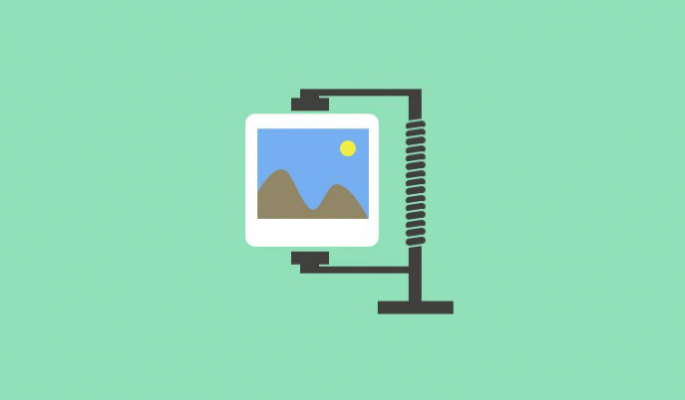- Backlinks Explained: Why Your Backlinks Aren’t Paying Off - April 10, 2024
- Boost Your Agency’s Credibility: A Guide to Online Reputation - April 10, 2024
- URL Slugs for SEO: A Comprehensive Guide - April 10, 2024
Search engines can’t see images, so it’s up to you to help them better understand your images. This will help them better connect you with your target audience. You also need to optimize your images for people, because people are impatient; and the longer it takes your site to open, the more likely your visitors will “bounce” off your site and go somewhere else. Because of that, search engines have started penalizing websites that open too slowly on desktop computers and mobile devices. In this post I’m going to show you how to properly optimize your images, which will lead to higher rankings, more traffic, and more sales.
1. Reduce image size
Search engines know that people are impatient, so you have about 3 seconds to load a page on your site before your visitor bounces off your site and goes to a competitor’s site. High bounces rates and super slow load times are a recipe for low rankings, low visitors and low sales. So, what do you do? Simple, don’t upload giant, massive images that take forever to load.
- Reduce file dimensions
If the space for your image is 500px by 500px, don’t upload an image that’s 3,000px by 3,000px. Upload an image that’s 500px by 500px. - Reduce file size
If you just snapped a really cool photo on your DSLR, that would be absolutely perfect for your blog post, make sure you check the size of that image before using it. Unless you’re selling photos, there no reason to upload 5, 10, and 15 mb images. You’re killing your load time. Use photoshop or an image size reduction tool. There are tons of free ones online.
http://www.reduceimages.com
http://jpeg-optimizer.com
http://webresizer.com
http://compressjpeg.com
http://www.resize-photos.com
2. Keyword optimized file names
The better a search engine understands the content on your site (text and images) the easier they can connect you with your target market. Since search engine robots can’t see your images, help them understand your image better by changing the file name to something a human or search engine can read.
[att_highlight color=”green”]Correct: /images/boston-home-remodeling.jpg[/att_highlight]
[att_highlight color=”red”]Incorrect: /images/pic54a.jpg[/att_highlight]
Note:
Try to stick your target keyword in at least one file name if it naturally fits. Don’t over do it, or risk the wrath of Google and other major search engines.
3. Keyword optimized ALT tags
ALT (alternative) tags specifically describe images to search engines. Use ALT tags wisely but don’t abuse them. Try to describe your image to search engines using ALT tags.
[att_highlight color=”green”]<img src=”” alt=”Photo of our Bostong Home remodeling Company”>[/att_highlight]
Note:
ALT tags are very important to the blind as well. Special software that reads web pages to the blind also read ALT tags to describe images to users who can’t see them.
4. Add an image sitemap
An XML image site helps search engines find and properly index each image on your site. Google highly recommends using them; and therefore, so do I. However, unless you have massive amounts of images on your site, I don’t recommend creating an image sitemap.
Free Image Sitemap Generators:
Note:
After you create an image sitemap, be sure to submit it to Webmaster Tools
5. Use captions
You know what captions are. They’ve been around much longer than websites. A caption is the supportive text below an image. It’s a sentence or two that clearly describes what’s happening in the image. Of course people read captions, but so do search engines. I highly recommend using captions because people on the web often skim information, looking for bits and piece of information. Captions will jump out to them.

6. Use compressed image types
When uploading files make sure you upload either a GIF, PNG or JPG. These files types are compressed versions of the original image, and therefore open much faster.
[att_highlight color=”blue”]GIF, PNG, or JPG[/att_highlight]
7. Alternate image hosting
If you have a lots of images or giant images that you must use, then consider an alternative host for your images, especially if your server is super slow or on a shared environment. Below are a couple free image hosting sites.
8. Hide images on mobile devices
Think very carefully about whether or not your mobile users need to see certain images or not. Pages that are optimized for mobile devices will show up higher in mobile search results. #mobilegeddon If your mobile users don’t really need to see an image, then don’t display it on the mobile version of your page.
9. Re-use image sources
I see this mistake a little too often. Why are you uploading the same image twice? Upload it once and use the same image source. Don’t upload it again and again. If you do, users will have to load that image each time you uploaded it, instead of just once; which will dramatically slow down your page’s load time.
10. Use hyphens, not underscores
There’s no rhyme or reason behind this, but Google simply prefers that you use hyphens to separates words in image file names. It’s simply how their algorithm was originally written. Of course, you don’t have to separate words with anything, but it’s a still a best practice.
[att_highlight color=”green”]Correct: /images/boston-home-remodeling.jpg[/att_highlight]
[att_highlight color=”red”]Incorrect: /images/boston_home_remodeling.jpg[/att_highlight]
Conclusion
3 seconds. That’s all you have. If each page of your site doesn’t load in 3 seconds, poof! Your user will disappear quicker than the last slice of pizza at a poker game. If you’re feeling overwhelmed by all this image optimization information, don’t be. Just get in the habit of properly optimizing your images and you won’t even notice the extra minute or so it takes.
